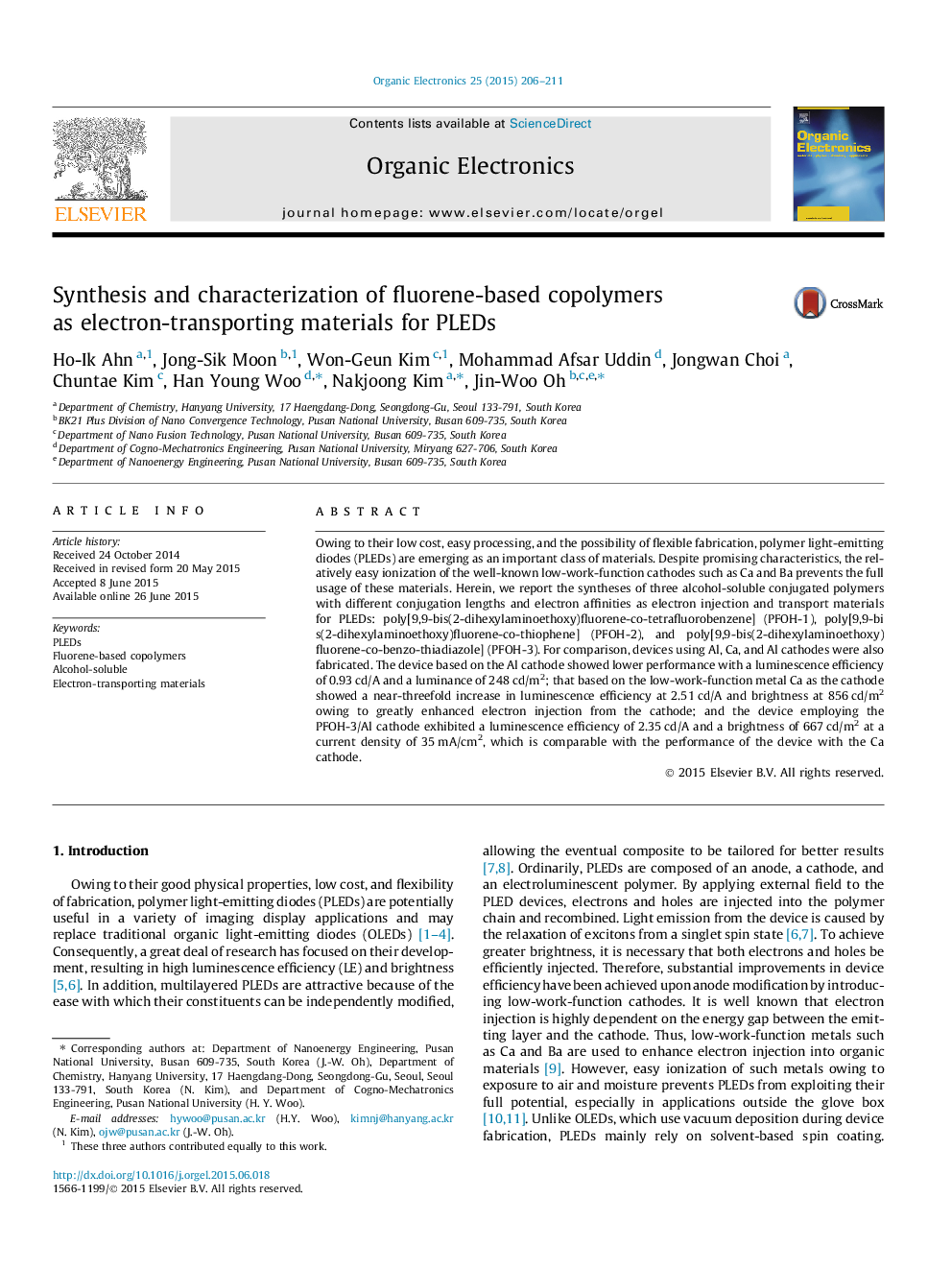| Article ID | Journal | Published Year | Pages | File Type |
|---|---|---|---|---|
| 1263642 | Organic Electronics | 2015 | 6 Pages |
•We synthesized the three alcohol-soluble conjugated polymers for PLEDs.•PFOH-3 shows higher electron-injecting ability as compared with PFOH-1 and PFOH-2.•PFOH-3/Al cathode based device was comparable to that of the device with a Ca cathode.
Owing to their low cost, easy processing, and the possibility of flexible fabrication, polymer light-emitting diodes (PLEDs) are emerging as an important class of materials. Despite promising characteristics, the relatively easy ionization of the well-known low-work-function cathodes such as Ca and Ba prevents the full usage of these materials. Herein, we report the syntheses of three alcohol-soluble conjugated polymers with different conjugation lengths and electron affinities as electron injection and transport materials for PLEDs: poly[9,9-bis(2-dihexylaminoethoxy)fluorene-co-tetrafluorobenzene] (PFOH-1), poly[9,9-bis(2-dihexylaminoethoxy)fluorene-co-thiophene] (PFOH-2), and poly[9,9-bis(2-dihexylaminoethoxy)fluorene-co-benzo-thiadiazole] (PFOH-3). For comparison, devices using Al, Ca, and Al cathodes were also fabricated. The device based on the Al cathode showed lower performance with a luminescence efficiency of 0.93 cd/A and a luminance of 248 cd/m2; that based on the low-work-function metal Ca as the cathode showed a near-threefold increase in luminescence efficiency at 2.51 cd/A and brightness at 856 cd/m2 owing to greatly enhanced electron injection from the cathode; and the device employing the PFOH-3/Al cathode exhibited a luminescence efficiency of 2.35 cd/A and a brightness of 667 cd/m2 at a current density of 35 mA/cm2, which is comparable with the performance of the device with the Ca cathode.
Graphical abstractFigure optionsDownload full-size imageDownload as PowerPoint slide
